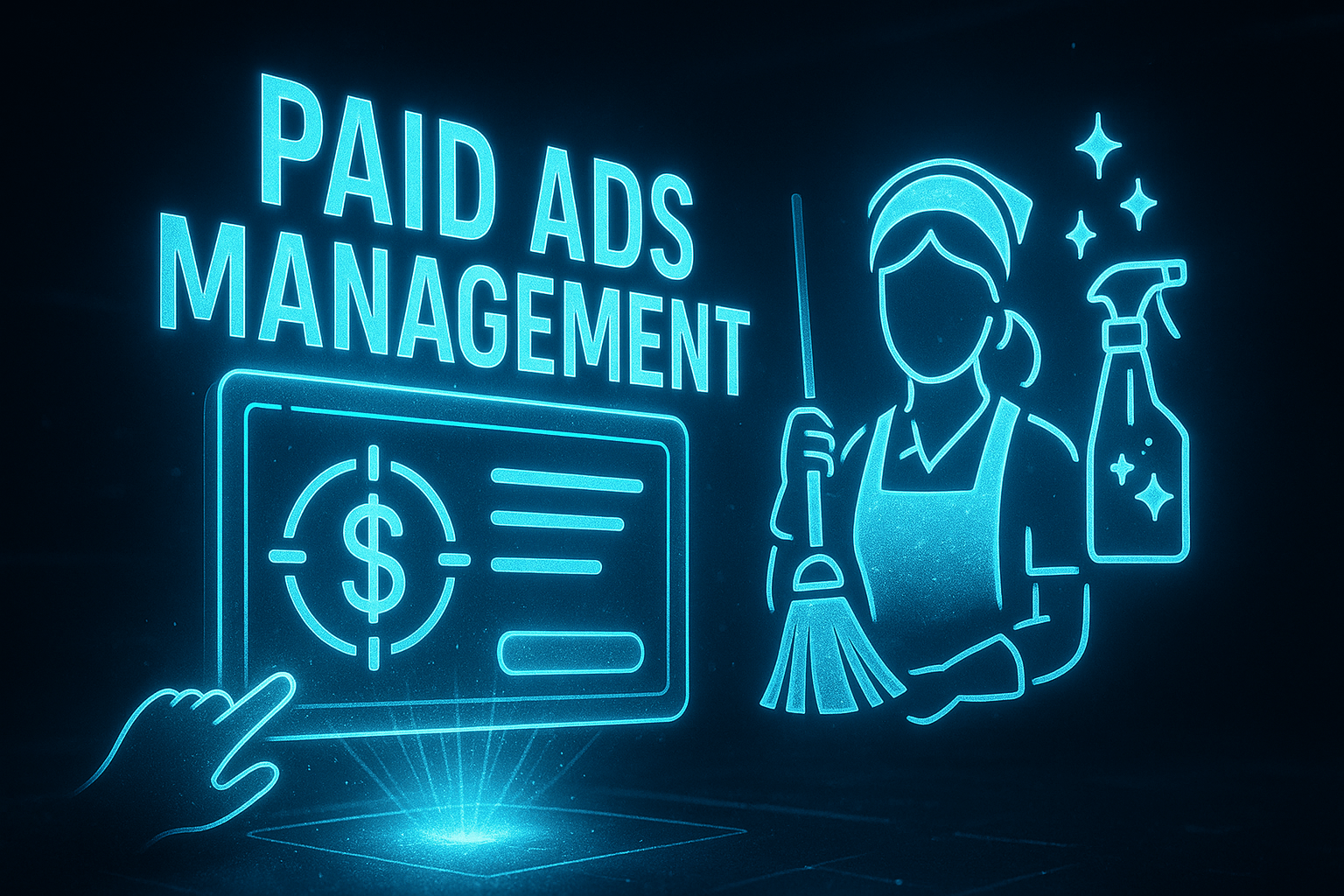Paid Ads Management for Electricians: Proven Strategies to Generate Quality Leads and Maximize ROI
by Design Delulu Editorial · October 22, 2025
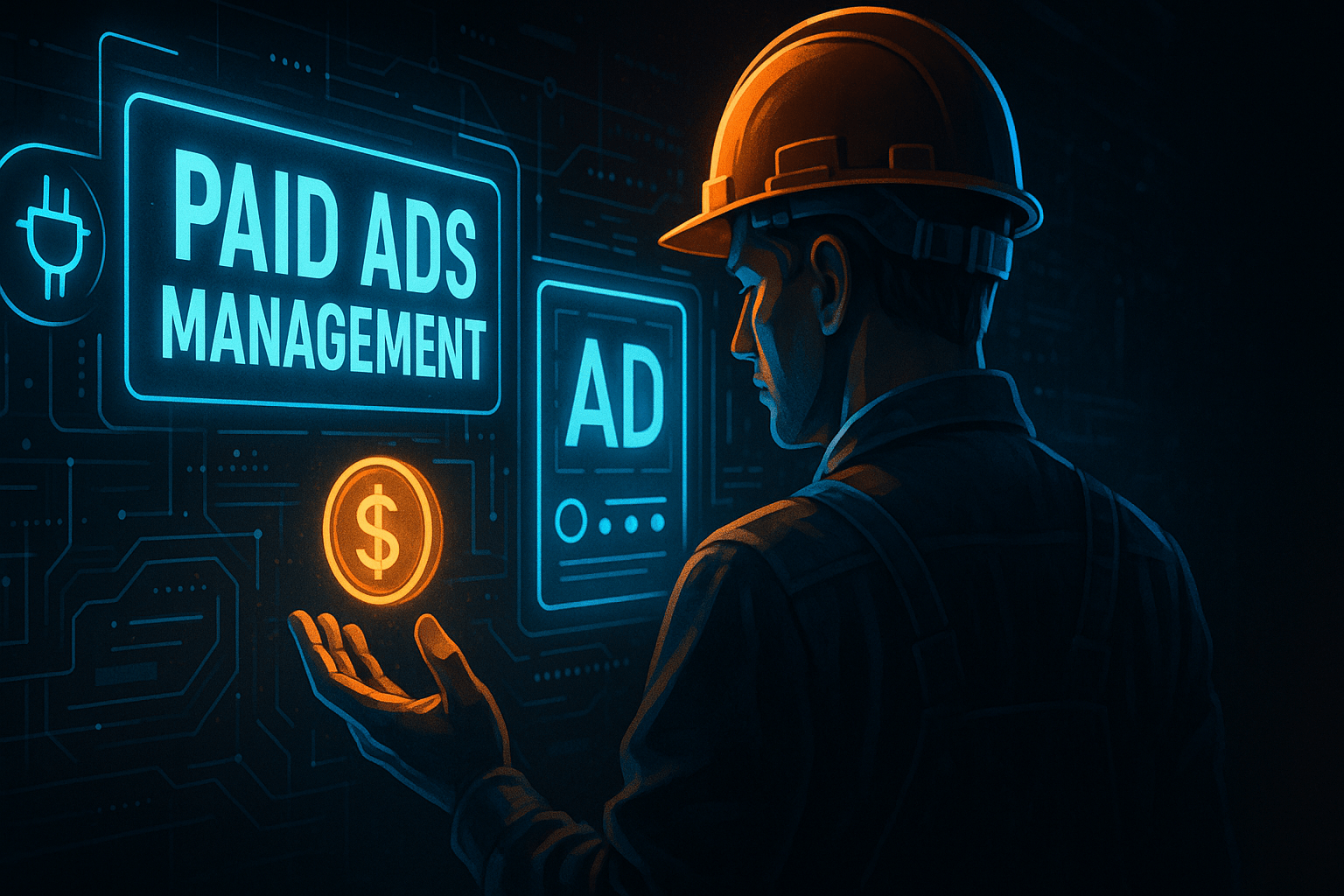
Smart, fast, and measurable. Here's how paid ads management helps Electricians win.
For electrical contractors competing in saturated local markets, organic reach alone won't cut it anymore. When a homeowner searches for emergency electrical repair at 9 PM or a property manager needs commercial rewiring quotes by morning, paid ads ensure your business appears first—exactly when intent peaks and competitors sleep. The electricians who dominate their markets understand a fundamental truth: visibility without timing is useless, and timing without measurement is expensive guessing.
Effective paid ads management for electricians isn't about throwing money at Google Ads or Facebook and hoping something sticks. It's a disciplined system that matches your service offerings to high-intent search queries, targets property types that need your expertise most, and continuously optimizes for the metrics that actually grow your business—qualified service calls, booked appointments, and customer lifetime value. The best electrical businesses treat paid advertising as a revenue engine with predictable inputs and measurable outputs, not a marketing expense with fuzzy returns.
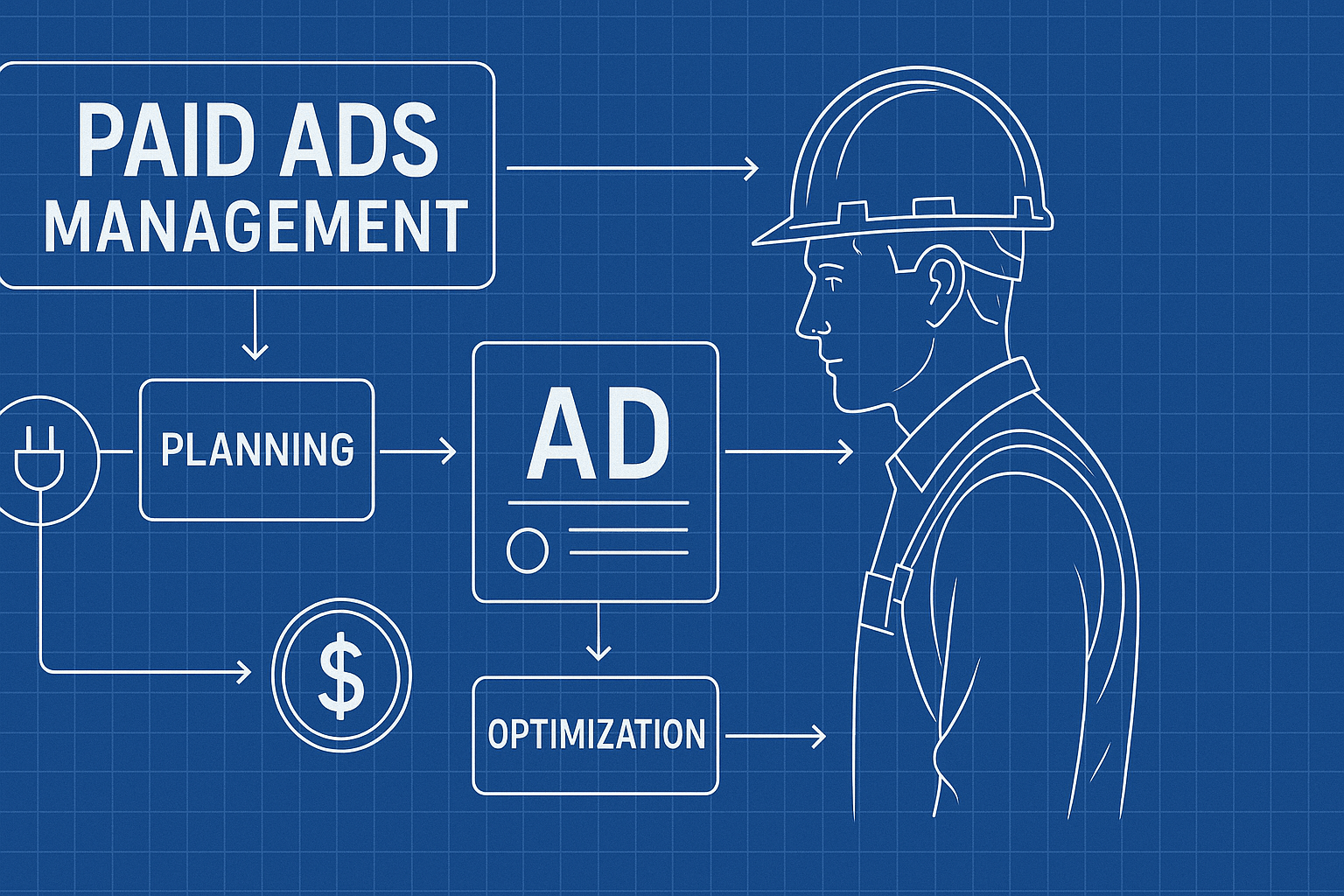
Why Paid Ads Management Matters for Electrical Contractors
The electrical services industry faces unique marketing challenges that make paid advertising particularly valuable. Unlike retail or e-commerce, electrical work often involves urgent needs, high-stakes decisions, and significant financial commitment. Homeowners don't casually browse electricians—they search when panel boxes spark, outlets fail, or renovation projects stall. This creates a compressed decision window where being present at the exact moment of need determines whether you win or lose the job.
Traditional marketing falls short because it can't deliver this precision timing. Directory listings bury you among competitors. Organic SEO takes months to build authority. Referrals depend on network effects you can't control. Paid ads solve the immediacy problem by placing your business directly in front of qualified prospects within minutes of launching a campaign.
But immediacy alone doesn't justify the investment. What makes paid ads management essential is scalability with accountability. You can start with a modest daily budget targeting your core service area, measure exact cost-per-lead and lead-to-customer conversion rates, then systematically increase spending on campaigns that deliver positive ROI while cutting underperformers. No other marketing channel offers this level of control and transparency.
The financial impact compounds quickly for electrical contractors who implement it correctly:
- Shorter sales cycles: Prospects clicking emergency repair ads convert faster than cold outreach because they're actively seeking solutions
- Higher average project values: You can target commercial property managers, real estate developers, and homeowners in affluent ZIP codes more precisely than organic methods allow
- Predictable pipeline: Once you identify winning ad combinations, you can forecast monthly lead volume based on budget allocation
- Competitive displacement: Local competitors without sophisticated ad strategies surrender market share every time they miss high-intent searches
The electricians who resist paid advertising often cite cost concerns or complexity. They're not wrong to be cautious—poorly managed campaigns waste money spectacularly. But the risk isn't in the channel itself; it's in executing without strategy, measurement, or optimization discipline.
Core Components of High-Performance Paid Ads for Electricians
Successful paid advertising for electrical services isn't a single tactic—it's an integrated system with multiple components working together. Each element serves a specific purpose in the customer acquisition process, and weakness in any area undermines overall performance.
1. Full-Funnel Account Structure and Budget Pacing
Most electricians make the mistake of treating all campaigns equally, spreading budget evenly across keywords regardless of intent or conversion potential. Strategic account architecture organizes campaigns by customer awareness stage and service urgency level.
At the bottom of the funnel, you have high-intent emergency campaigns targeting searches like 'electrician near me now' or 'emergency electrical repair [city].' These prospects need immediate service and convert quickly, but competition drives higher cost-per-click. Your budget pacing here should prioritize availability during peak emergency hours (evenings and weekends) when margins justify premium ad costs.
Mid-funnel campaigns target project research queries like 'cost to rewire house' or 'commercial electrical panel upgrade.' These prospects are comparing options and gathering quotes. Your ads should emphasize credentials, project portfolios, and consultation offers rather than emergency availability. Budget pacing here focuses on business hours when decision-makers are active.
Top-funnel campaigns capture early awareness through display and social ads targeting property owners in your service area who match demographic profiles of past customers. These campaigns build brand recognition so your business feels familiar when they eventually need electrical services. Budget allocation here should be modest—enough to maintain presence without diverting resources from higher-converting campaigns.
Proper budget pacing also means dayparting and geographic bid adjustments. If your data shows commercial leads convert best Tuesday through Thursday, you increase bids during that window. If certain ZIP codes deliver 3x ROI compared to others, you allocate budget accordingly. This granular control separates profitable campaigns from money pits.
2. Creative Testing Matrix for Hooks and Angles
The difference between a 2% and 8% click-through rate often comes down to how you frame your offer in the first five words of ad copy. Electrical services involve anxiety-inducing problems—power outages, fire hazards, failed inspections—so your creative needs to immediately address the emotional stakes and position your business as the reliable solution.
A robust creative testing framework systematically evaluates different messaging approaches:
Problem-focused hooks lead with the pain point: 'Tripping Breakers? Overloaded Panel?' or 'Failed Electrical Inspection Delaying Your Sale?'
Solution-focused hooks emphasize the outcome: 'Same-Day Panel Upgrades' or 'Licensed Electricians, Zero Surprises'
Credibility-focused hooks build trust immediately: 'Family-Owned Since 1987' or 'Master Electrician, 500+ Five-Star Reviews'
Urgency-focused hooks create time pressure: 'Available Today—No Waiting' or 'Emergency Service, 24/7 Response'
You don't guess which performs best—you run controlled tests where one variable changes at a time. Test three variations of headlines with identical body copy and CTAs. Let them accumulate statistically significant click and conversion data. Kill underperformers. Scale winners. Repeat.
The same testing discipline applies to landing page creative. Rotate hero images showing your team at work, before/after project photos, or trust signals like badges and certifications. Test long-form vs. short-form copy. Test multi-step forms vs. single-click call buttons. Small improvements compound—a 15% better conversion rate on your landing page effectively gives you 15% more leads from the same ad spend.
3. High-Signal Audiences and Negative Keyword Strategy
Wasted ad spend typically comes from showing ads to the wrong people or for irrelevant searches. Audience precision and negative keyword hygiene protect your budget by filtering out low-quality traffic before it costs you money.
For search campaigns, start with a comprehensive negative keyword list that excludes DIY-focused searches ('how to wire outlet,' 'electrical code PDF'), job-seeking queries ('electrician jobs,' 'electrician salary'), and informational searches unlikely to convert ('electrical symbols,' 'types of circuit breakers'). These queries consume budget without generating customers.
Build custom audiences using first-party data from your CRM. Upload lists of past customers for remarketing campaigns offering maintenance plans or referral incentives. Create lookalike audiences based on your highest-value customers—property management companies, commercial contractors, or homeowners who purchased whole-home electrical upgrades. Platforms like Google and Facebook use these lists to find similar prospects in your target geography.
Layer in behavioral and demographic targeting. Recent home buyers often need electrical updates. Property owners in neighborhoods built 30-50 years ago may need panel upgrades as they add EV chargers or home offices. Commercial property managers make ongoing electrical service decisions. By stacking these audiences, you increase the probability that ad impressions reach people who actually need your services soon.
Review search query reports weekly to identify new negative keywords and refinement opportunities. You'll discover bizarre searches that somehow triggered your ads—add them to exclusions immediately. You'll also find high-converting keywords you hadn't considered—build dedicated campaigns around them.
4. ROAS/CPA Optimization with Incrementality Checks
Measuring success in paid advertising requires tracking two metrics in parallel: efficiency (how much you pay per result) and incrementality (whether the ads caused results you wouldn't have gotten otherwise).
Most electricians focus exclusively on efficiency metrics—cost per click, cost per lead, return on ad spend. These matter, but they don't tell the complete story. If your brand is already strong in your market, some people clicking your ads would have found you anyway through organic search or word-of-mouth. You don't want to pay for customers you'd get regardless.
Incrementality testing involves running controlled experiments where you temporarily pause campaigns in certain geolocations or for specific audience segments, then measure whether total lead volume actually drops. If pausing a campaign reduces leads by less than the campaign was 'generating,' you were overcounting its impact—some of those leads were coming regardless.
For optimization, track the entire funnel:
- Impression share: Are you showing up for all available searches in your target area?
- Click-through rate: Is your creative compelling compared to competitors?
- Conversion rate: Are clicks turning into form fills or phone calls?
- Lead quality rate: What percentage of leads are in your service area with real projects?
- Booking rate: How many qualified leads turn into scheduled appointments?
- Customer acquisition cost: Total ad spend divided by new customers acquired
- Customer lifetime value: Average revenue per customer over their relationship with your business
The goal is simple: keep customer acquisition cost below customer lifetime value while scaling total volume. When a campaign achieves this, you increase budget. When it doesn't, you troubleshoot or cut it. This disciplined approach prevents the common trap of celebrating vanity metrics like clicks while losing money on actual conversions.
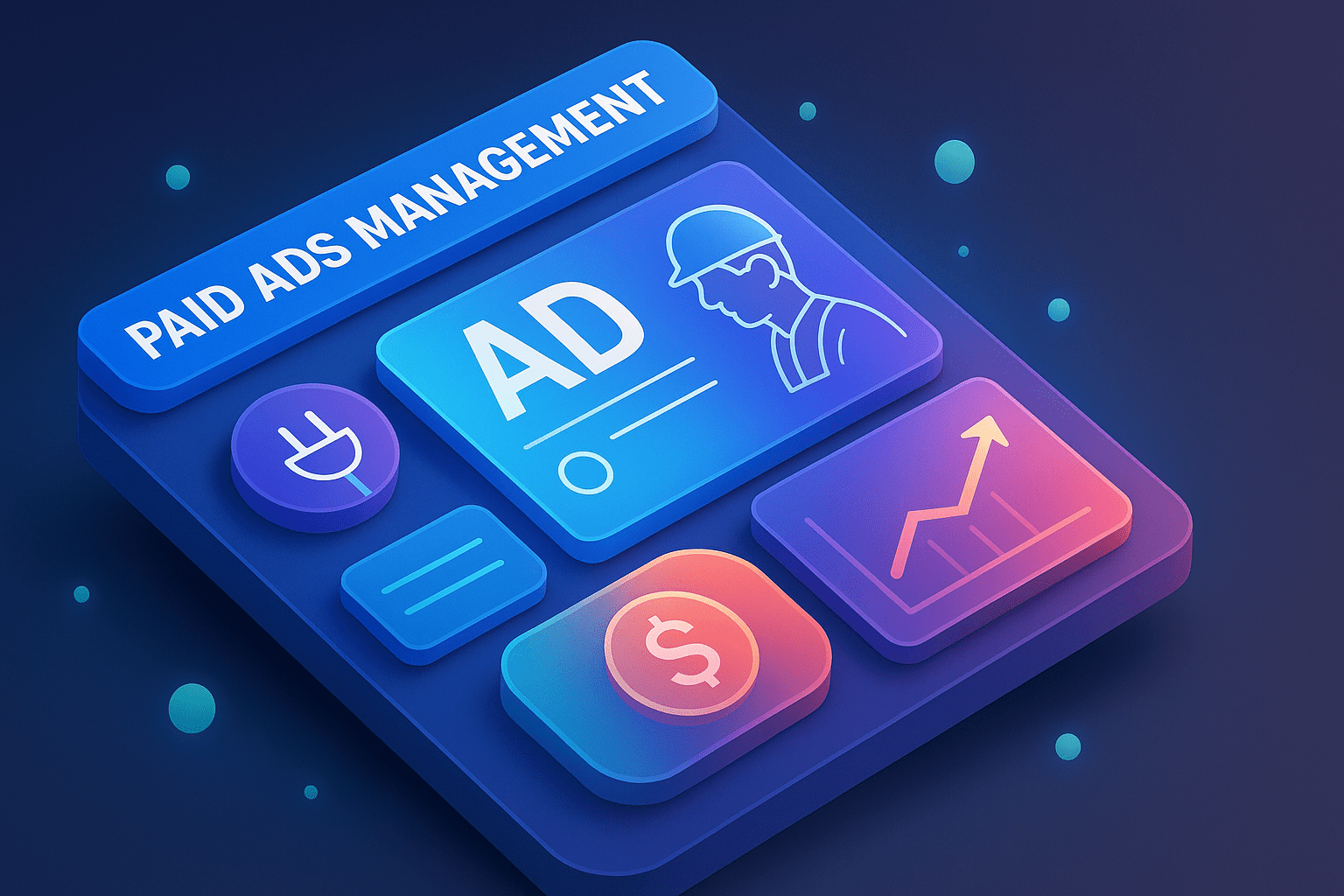
Implementation Framework: From Strategy to Sustainable Results
Knowing what works differs from actually implementing it successfully. The gap between strategy and execution kills more campaigns than bad tactics. Here's the proven framework for launching paid ads management that delivers measurable results within weeks, not months.
Phase 1: Discovery and Goal Alignment (Week 1)
Effective campaigns start with clarity on three dimensions: business outcomes, operational constraints, and success metrics.
Business outcomes go beyond 'generate more leads.' Are you trying to fill schedule gaps during slow seasons? Expand into commercial work? Increase average project size? Break into new service areas? Each goal requires different campaign architecture and targeting strategies. An electrician focused on residential panel upgrades needs different messaging than one prioritizing commercial maintenance contracts.
Operational constraints shape what's realistic. How many leads can you handle weekly before service quality suffers? What's your typical lead-to-close timeline? Do you have capacity for emergency calls outside business hours? If your ads promise 24/7 service but you don't deliver it consistently, you'll damage reputation faster than you generate revenue.
Success metrics establish clear accountability. Define your acceptable customer acquisition cost based on average project value and profit margins. Set minimum lead volume targets. Establish quality standards (percentage of leads in service area, percentage requiring services you actually offer). These metrics become your decision framework for optimizing campaigns.
Phase 2: Blueprint Development (Week 2)
With goals established, you design the complete system architecture before spending a dollar on ads. This blueprint includes:
Campaign taxonomy: Map out campaign groups by service type (residential emergency, commercial planned, panel upgrades, EV charger installation, etc.), geographic area if you serve multiple markets, and customer type (homeowner, property manager, general contractor, real estate agent).
Keyword research and targeting plan: Identify 50-200 core keywords across awareness stages. Group them by intent level and expected conversion rate. Establish initial bid strategies for each group based on estimated value.
Creative brief and asset requirements: Specify what ad variations you'll test, what landing pages you need, what tracking must be in place. If you lack professional photos of your team and recent projects, this is when you schedule that shoot—credible creative dramatically impacts performance.
Measurement infrastructure: Configure conversion tracking for form submissions, phone calls, chat initiations, and any other lead capture methods. Set up call tracking numbers so you can attribute phone leads to specific campaigns. Connect your CRM to advertising platforms for closed-loop reporting that tracks leads all the way to revenue.
This planning phase feels slow but prevents expensive mistakes. It's far cheaper to identify and fix strategy flaws on paper than after spending thousands on misdirected campaigns.
Phase 3: Build, QA, and Launch (Week 3)
Implementation requires methodical attention to detail. Small configuration errors—wrong conversion tracking, broken phone numbers, disapproved ads—waste budget and delay results.
Build campaigns according to your blueprint, starting with your highest-priority service and geographic area. Don't try to launch everything simultaneously. It's better to fully optimize one campaign before expanding than to spread your attention across ten half-configured campaigns.
Quality assurance checklist before launch:
- All conversion tracking fires correctly on test submissions
- Phone call tracking routes properly and records source data
- Landing pages load fast on mobile (under 3 seconds)
- Ad copy matches landing page offers (no bait-and-switch)
- Contact forms collect necessary qualification questions
- Thank-you pages provide clear next steps
- Negative keyword lists are applied to all campaigns
- Budget caps prevent runaway spending
- Geographic targeting matches actual service areas
- Ad schedule aligns with business availability
Launch with conservative budgets—enough to gather meaningful data but not so much that early mistakes prove costly. You'll optimize based on actual performance, not assumptions.
Phase 4: Optimization and Scaling (Ongoing)
The real work begins after launch. Paid advertising requires continuous monitoring, testing, and refinement. In the first two weeks, review performance daily to catch major issues quickly. After initial stabilization, establish a weekly optimization routine.
Your weekly optimization process should include:
- Performance review: Compare actual results against targets for CPL, lead quality, and conversion rates
- Search query audit: Identify irrelevant searches to add as negatives and high-performing keywords to emphasize
- Creative refresh: Pause underperforming ad variations, scale winners, introduce new test variants
- Bid optimization: Increase bids on high-ROI keywords and campaigns, reduce spending on low performers
- Landing page analysis: Review user recordings and heatmaps to identify friction points reducing conversions
- Competitive intelligence: Monitor which ads competitors are running and identify differentiation opportunities
Quarterly, conduct deeper strategic reviews. Assess whether campaign structure still aligns with business priorities. Evaluate whether you've exhausted growth opportunities in current markets and should expand geographically or into new service lines. Recalibrate success metrics based on actual customer lifetime value data now that you have a cohort of customers acquired through paid ads.
The electricians who succeed long-term with paid ads treat it as a core business competency, not a one-time project. They invest in developing internal expertise or partnering with specialists who understand both paid advertising and the electrical services business model.
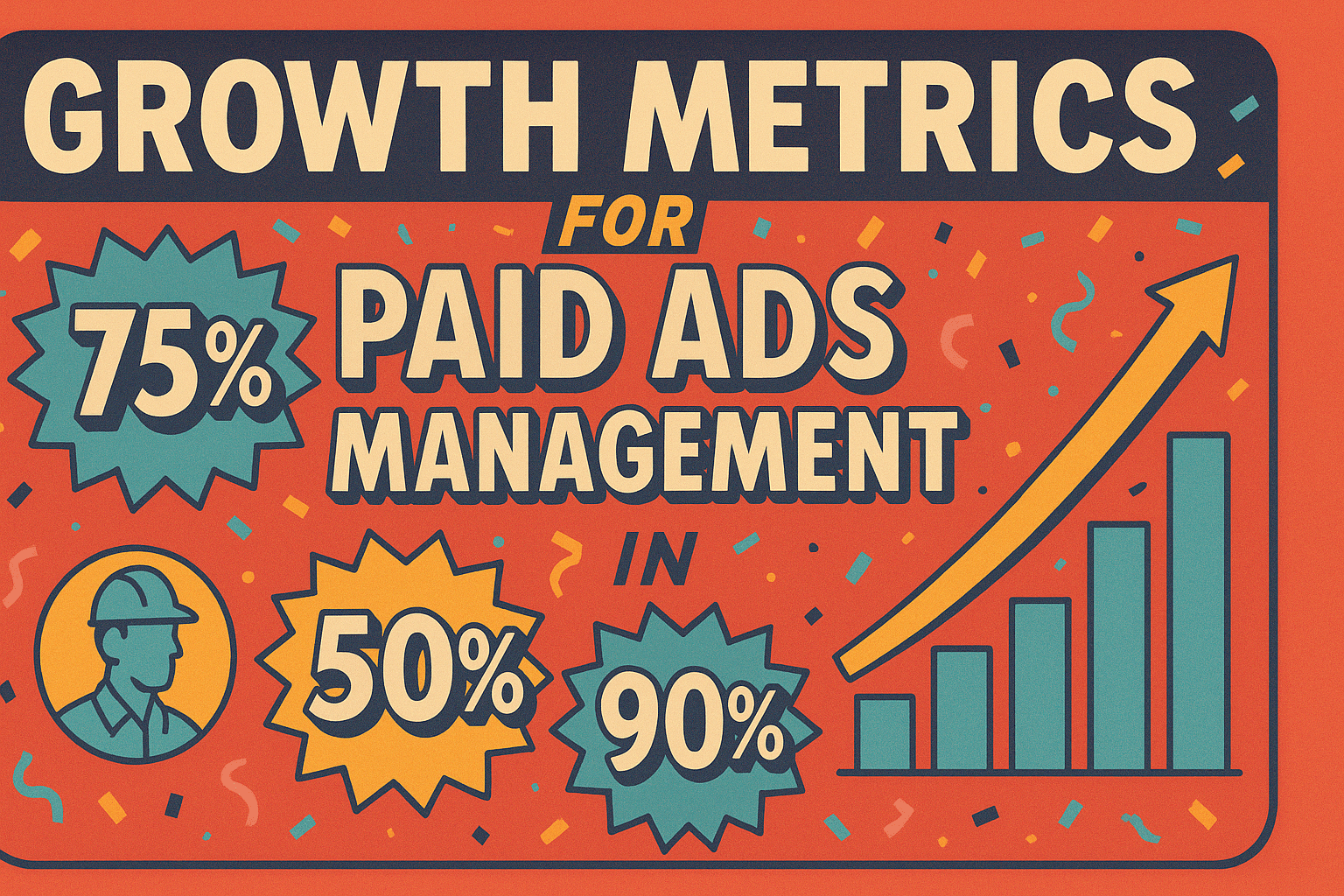
Industry-Specific Strategies That Move the Needle for Electrical Contractors
Generic paid advertising advice fails electrical contractors because it ignores industry-specific buying behaviors and competitive dynamics. Here are tactical applications that account for how customers actually buy electrical services.
Map Search Intent to Buyer Stages in Electrical Services
The customer journey for electrical work varies dramatically by service type. Someone with a sparking outlet needs a solution today. Someone planning a kitchen renovation is gathering contractor quotes over weeks. Your campaign architecture must match these different timelines.
For emergency services: Prioritize mobile-optimized ads with click-to-call functionality. Emphasize immediate availability and response time in headlines. Bid aggressively during evenings and weekends when emergencies peak. Use ad extensions showing your phone number prominently.
For planned projects: Focus on credibility and expertise in ad creative. Use lead magnets like 'Free Electrical Safety Inspection' or 'Panel Upgrade Cost Estimator' to capture early-stage prospects. Nurture these leads with email sequences that demonstrate capability before they're ready to book.
For commercial services: Target job titles (facilities manager, property manager) and company types rather than just keywords. Emphasize reliability, preventive maintenance programs, and minimizing downtime. Commercial decision cycles are longer, so your campaign needs remarketing sequences that stay top-of-mind over 30-90 days.
Use Social Proof and Outcomes Early in the Journey
Electrical work involves significant trust. Customers invite you into their homes or businesses and rely on your expertise to prevent fire hazards and code violations. Establishing credibility immediately is essential.
Incorporate social proof into every customer touchpoint. Your ads should mention specific credentials: 'Master Electrician, Licensed & Insured' or 'A+ BBB Rating, 500+ Reviews.' Use ad extensions to display review ratings and counts.
Landing pages should lead with trust signals—certifications, associations, insurance details, and customer testimonials. Include before/after project photos showing completed work. For commercial prospects, showcase recognizable clients or project types they can relate to.
The mistake many electricians make is burying this credibility information in 'About Us' pages customers never visit. Put it front and center where it influences the decision to call or submit a form.
Measure Against a Single Source of Truth Dashboard
Electrical contractors often receive leads through multiple channels—phone calls, contact forms, text messages, chat widgets. Tracking ROI becomes impossible without centralized reporting that attributes each lead to its source campaign.
Build a unified dashboard that pulls data from all advertising platforms, call tracking systems, and your CRM. This dashboard should show:
- Total ad spend by campaign and time period
- Leads generated by source and quality tier
- Appointments scheduled and completed
- Projects sold and revenue generated
- Customer acquisition cost and ROI by campaign
Update this dashboard weekly at minimum. Use it as the foundation for optimization decisions. When everyone on your team references the same data, you eliminate debates about what's working and align around evidence-based decisions.
Ship Small, Test Fast, Keep Compounding Wins
Perfectionism kills momentum in paid advertising. Waiting until you have perfect ad copy, perfect landing pages, and perfect tracking means competitors capture market share while you prepare.
Instead, adopt a rapid iteration mindset. Launch campaigns at a functional level, gather real performance data quickly, then improve based on what you learn. Your first campaigns won't be optimal—that's expected. But each optimization cycle compounds, and the electricians who start sooner get more learning cycles than those who delay.
Set a weekly or bi-weekly rhythm for improvements. Each cycle, pick one or two elements to optimize—maybe you test new ad headlines this week, adjust landing page copy next week, refine audience targeting the week after. Small improvements accumulate into substantial performance gains over quarters.
This approach also prevents paralysis when results disappoint initially. Rather than scrapping entire campaigns, you systematically troubleshoot: Is the ad creative the issue? The landing page? The offer? The targeting? Methodical testing reveals answers that guessing never will.
Common Pitfalls and How to Avoid Them
Most electrical contractors who fail with paid advertising make predictable mistakes. Knowing these patterns helps you avoid expensive learning experiences.
Mistake #1: Focusing on Vanity Metrics Instead of Revenue
It's easy to get excited about high click-through rates or low cost-per-click while ignoring whether campaigns actually generate profitable customers. Optimization should ladder up to business outcomes—revenue, profit, customer acquisition cost relative to lifetime value. If a campaign has expensive clicks but converts at high rates to valuable customers, it's performing well. If a campaign has cheap clicks that generate low-quality leads, it's wasteful despite attractive surface metrics.
Mistake #2: Inadequate Lead Follow-Up
Paid advertising's ROI depends on what happens after leads come in. If your team takes 24 hours to respond to inquiries, or lacks a systematic follow-up process for prospects who don't immediately book, you're squandering advertising investment. Studies consistently show that response time dramatically impacts conversion rates—the difference between responding in 5 minutes vs. 5 hours can reduce your close rate by 80%.
Implement automated immediate responses (text message confirming receipt, email with next steps) while a human follows up within 30 minutes during business hours. For after-hours leads, set expectations clearly about when they'll hear back. Persistence matters—a prospect who doesn't answer your first call may answer your third or respond to your second email.
Mistake #3: Poor Landing Page Experiences
Driving traffic to your homepage or a generic 'Contact Us' page destroys conversion rates. Effective landing pages match the specific promise and intent of the ad that brought the visitor there. If someone clicked an ad about panel upgrades, they should land on a page specifically about panel upgrades—showing relevant projects, explaining the process, addressing common concerns, and offering a clear path to get a quote.
Eliminate navigation menus and distractions on landing pages. Every element should either build confidence in your expertise or encourage form submission. Test different form lengths—sometimes fewer fields increases completion, but sometimes asking qualifying questions upfront filters out low-quality leads worth trading for higher form abandonment.
Mistake #4: Set-It-and-Forget-It Management
Paid advertising platforms and competitive landscapes change constantly. An optimized campaign today will drift out of alignment within weeks without active management. Competitors adjust their strategies. Keyword costs fluctuate. Search volume patterns shift seasonally. Platform algorithms evolve.
Budget at least 5-10 hours weekly for active campaign management if handling it internally, or work with a specialist who provides ongoing optimization as core service, not one-time setup. The difference between mediocre and excellent paid advertising performance isn't strategy—it's execution consistency.
Choosing Between In-House Management and Agency Partnership
Electrical contractors face a genuine build-vs-buy decision with paid ads management. Both paths can work, but they require different resource commitments and come with different risk profiles.
In-House Management Considerations
Advantages: Complete control over strategy and budget allocation. No agency markup. Deep understanding of your specific business and customer base. Ability to make real-time adjustments without waiting for agency response.
Requirements: Someone on your team needs to develop genuine expertise in paid advertising platforms—this typically means 20-40 hours of training plus ongoing learning to keep current. They need dedicated time for campaign management—not squeezing it between field calls or other responsibilities. You need sufficient advertising budget to generate statistically significant data for optimization; very small budgets make learning difficult.
Best fit for: Electrical contractors with $5K+ monthly ad spend who have or can hire dedicated marketing staff, or owner-operators who genuinely enjoy the analytical and technical aspects of campaign management.
Agency Partnership Considerations
Advantages: Immediate access to expertise and established systems. Specialists who manage campaigns professionally stay current on platform changes and industry best practices. Ability to scale up or down without hiring/firing. Often better results faster because they've made mistakes on someone else's dime.
Requirements: Management fees (typically 10-20% of ad spend or fixed monthly retainer). Clear communication about goals, constraints, and performance expectations. Willingness to trust external partners with important business function. Time investment in onboarding and regular check-ins even though day-to-day management is handled externally.
Best fit for: Electrical contractors who want to focus on service delivery and operations rather than marketing mechanics, or those scaling quickly and needing professional infrastructure immediately.
The wrong choice is trying to do it yourself without adequate commitment—launching campaigns with minimal oversight, letting them run on autopilot, wondering why results disappoint. Paid advertising rewards focus and expertise. Treat it seriously or don't do it at all.
Frequently Asked Questions
Let’s level up your Electricians business
Need services that actually move the needle for Electricians? See our approach, pricing, and timelines—then book a quick call.
Additional Resources
- Schedule Your Paid Ads Strategy Session
Book a 30-minute consultation to discuss your electrical business goals, current marketing challenges, and how paid ads management can deliver measurable ROI for your specific service area and offerings.
- View Our Electrician Marketing Portfolio
Explore real-world case studies showing how we've helped electrical contractors generate qualified leads, reduce acquisition costs, and scale revenue through strategic paid advertising campaigns.
- Access Free Electrician Marketing Tools
Download our complimentary resources including paid ads budget calculators, keyword research templates, landing page conversion checklists, and campaign tracking dashboards built specifically for electrical contractors.
Related Reading

Specialized paid ads management for immigration law firms. Get more qualified leads with data-driven PPC strategies, proven campaign structures, and expert optimization.

Master paid ads management for jewelry stores with proven strategies for Google, Facebook & Instagram. Get higher ROAS, better targeting, and sustainable growth.
